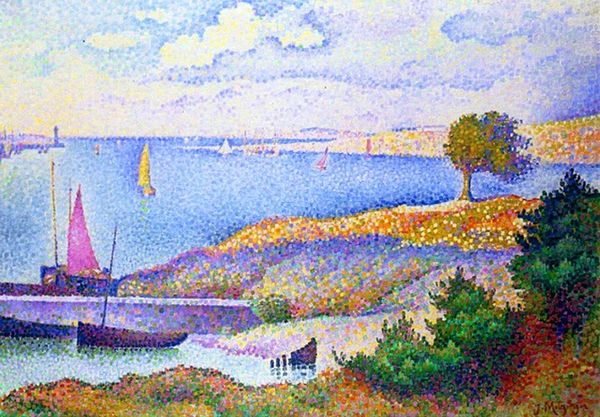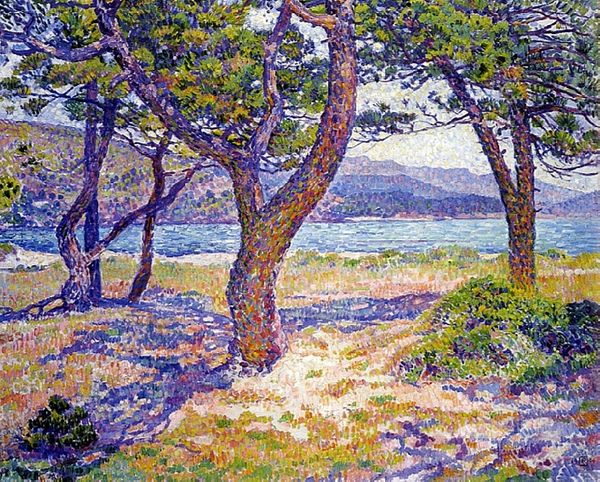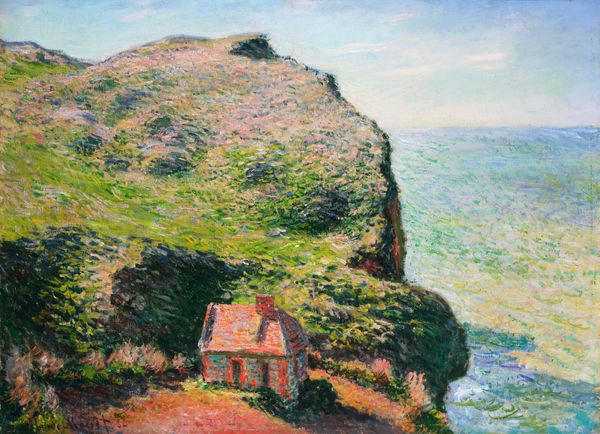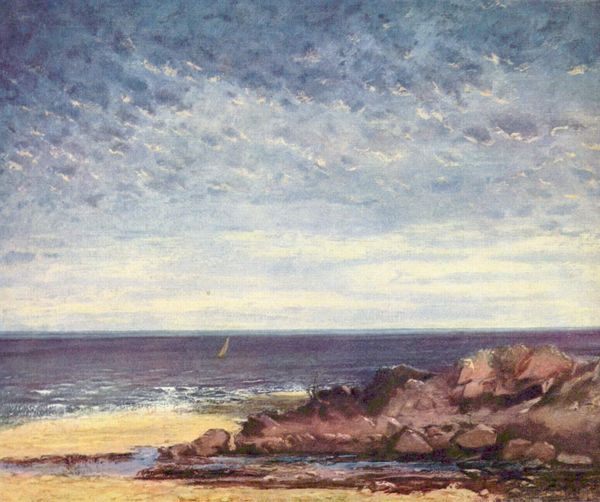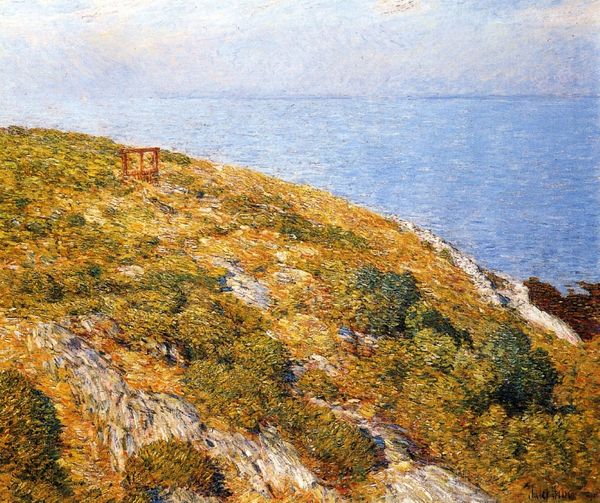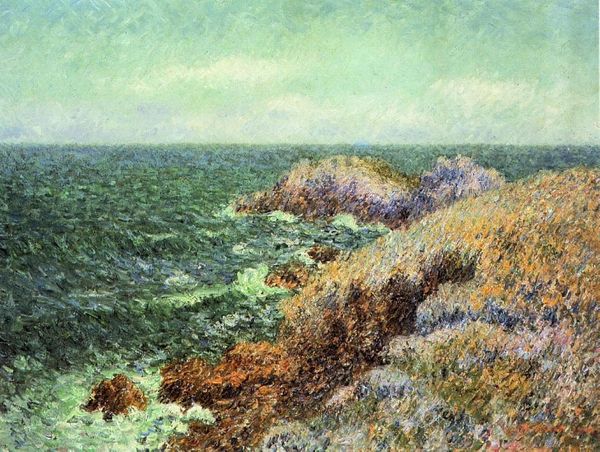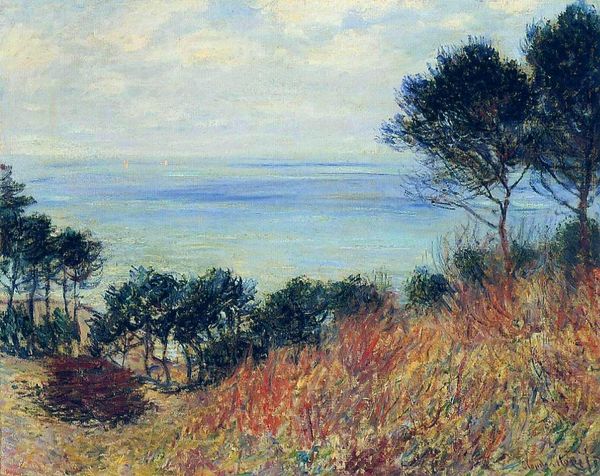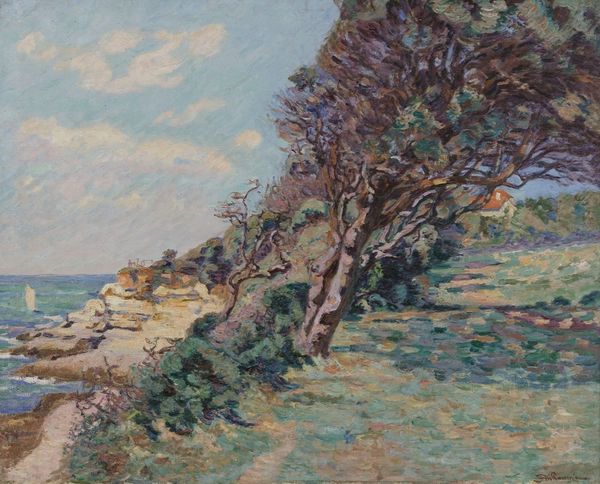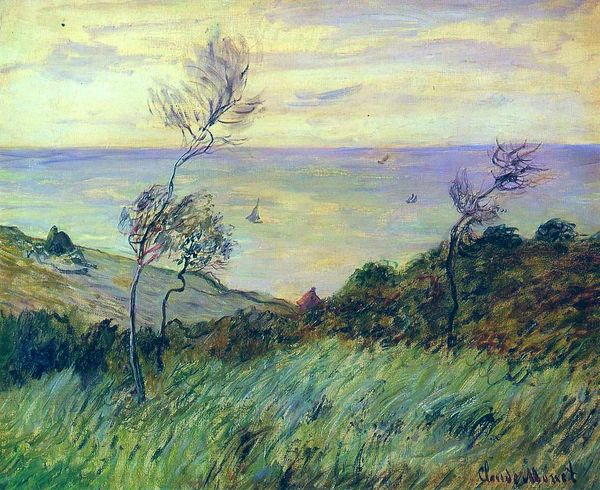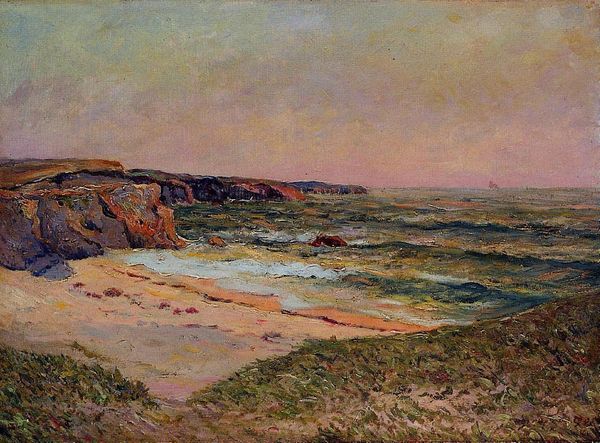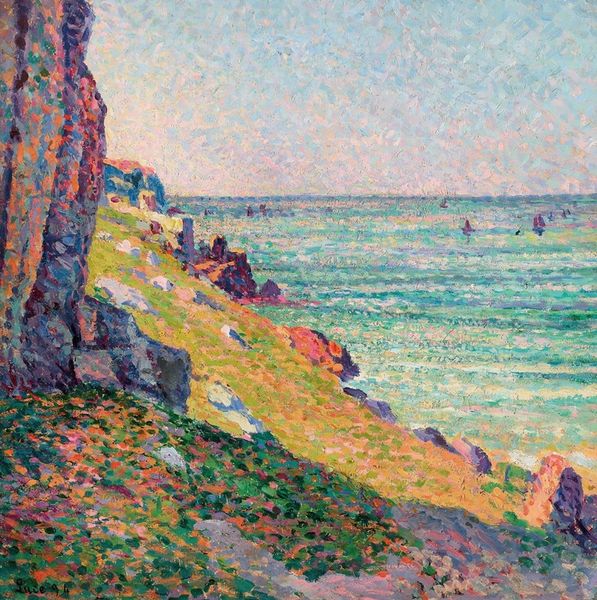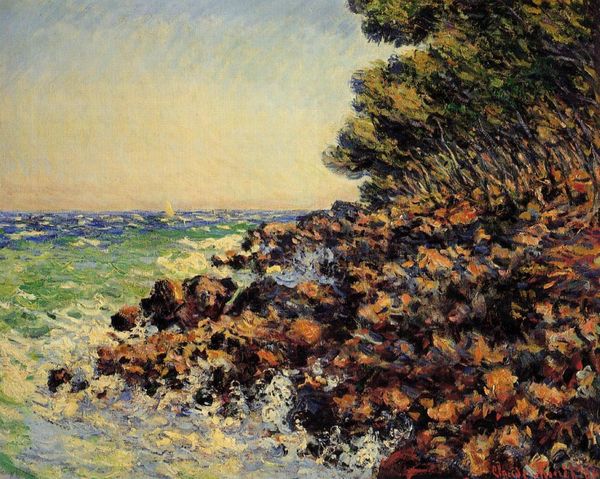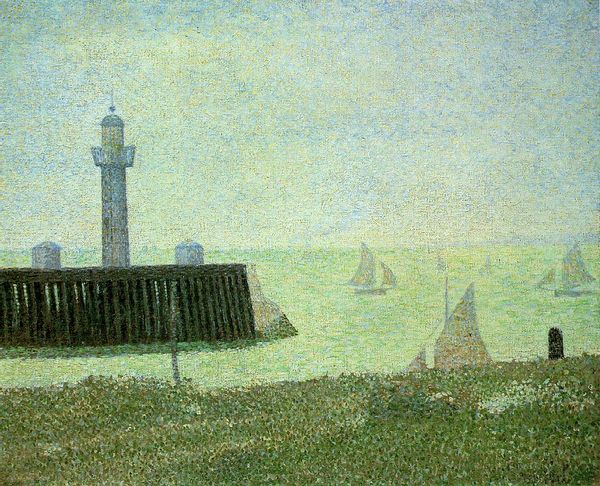
Dimensions: 45.5 x 65 cm
Copyright: Public domain
Curator: Looking at "Levant Isle" painted by Theo van Rysselberghe in 1892, it’s a great example of post-impressionist landscape painting, utilizing the plein-air method. Editor: The first thing that strikes me is the composition. The overall effect of the tiny, vibrant dots creates this shimmering surface, like the light itself is a tangible substance. The water and sky especially, they feel alive. Curator: Yes, Rysselberghe was very interested in capturing light and atmosphere, aligning with many of his impressionist and post-impressionist contemporaries. Remember, Pointillism, though rooted in scientific theory, also aspired to capture fleeting moments of visual experience. This work also reflects a broader European fascination with exotic locales and the escapism they offered. The 'Levant' evoked a sense of the far-off, the untamed. Editor: Agreed. The architecture is rather subtle but I find it so interesting because the composition’s interest is obviously nature. Curator: It gives a little point to explore how these landscapes and places have developed through interactions with inhabitants. I suppose this has shaped landscapes themselves into some degree. I believe those elements gave identity in the works by artists. Editor: It seems a rather empty but comfortable landscape at first sight. I guess what has also interested me so much are the vessels on the ocean! This work invites closer inspection; you start noticing how cleverly he uses the lack of precision with a touch of color. Curator: It really is impressive, indeed. Editor: Indeed, a fine example of post-impressionism that merges optical science with poetic feeling. Curator: "Levant Isle" serves as a potent reminder of how deeply landscape painting is entwined with our perceptions and the political and cultural world of our own identity.
Comments
No comments
Be the first to comment and join the conversation on the ultimate creative platform.
